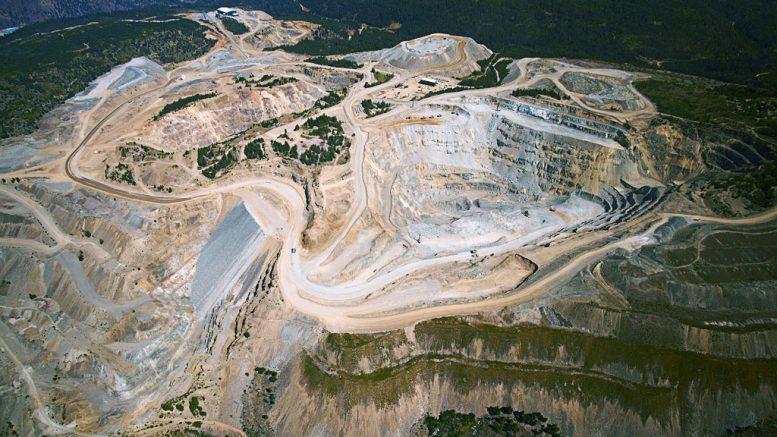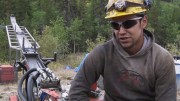VANCOUVER — British Columbia is known for its coal and copper-gold deposits, with a storied history of mining all three commodities. Now the second largest mining company in the world is looking to add a B.C. copper porphyry deposit to its portfolio of development properties.
Speaking at the opening ceremony of the Association for Mineral Exploration’s Roundup 2019 convention in Vancouver, Rio Tinto’s (LON: RIO; NYSE: RIO) exploration director for the Americas Region, Chris Welton, said his company is scoping out B.C. for a copper play.

“My exploration manager reminds me that to balance our portfolio in Canada, he wants a B.C. porphyry.”
Chris Welton
Americas Exploration director, Rio Tinto
“We would like to be exploring in BC but we just need to find the right project,” Welton said. “My exploration manager reminds me that to balance our portfolio in Canada, he wants a B.C. porphyry.”
Porphyry deposits are sought after because they are low grade but very large, allowing for bulk mining and economies of scale. Copper porphyries typically contain 100 million to 5 billion tonnes of ore with grades between 0.2% and 1% copper. Rio Tinto’s Bingham Canyon Mine in Utah produces an annual 300,000 tonnes of copper.
Gold, copper, molybdenum, silver and lead are among the metals found in porphyries.
Some of BC’s largest copper and gold deposits are porphyries, including the Highland Valley Copper Mine, KSM, Prosperity and New Afton.
Welton said his company’s exploration arm, known as RTX, dedicates about half of its global exploration budget to copper, with the rest focused on eight other commodities in 16 countries.
The 24-year Rio veteran said that contrary to popular belief, despite being a large company, Rio Tinto has a limited exploration budget.
“If we keep the budget tight, keep the teams lean, and focus those now-scarce resources, and valued resources, on only the very best opportunities, this will make sure that as much of the budget as possible goes in the ground, and it will force the geologists or the exploration manager to only test those targets they believe will deliver results. Only then can we improve discovery rates,” Welton said.
Another point made by Welton: Juniors need to be thinking ahead. Way ahead. He noted that a greenfield program typically will take 15 years to make a discovery, and another 10 to 15 years to progress the discovery into a mine.
“Our portfolio today will be delivering metals and minerals to the market in 15 to 25 years time. As explorationists can we predict what the world will want in 15 years?” He gave the example of Rio’s Jadar lithium borate project in Serbia. Preliminary exploration took place in 1998, it wasn’t until 2004 that a discovery hole was drilled, and it took another four years until a JORC-compliant resource estimate was published.
“So we’re 14 years and counting since the discovery. Who could predict the hype around EVs (electric vehicles) and therefore the lithium sector eight years ago?”
In his concluding remarks, Welton addressed the question many in the audience wanted the answer to: What does a major mining company like Rio Tinto look for in a junior resource firm?
“Our focus is on optionality and upside,” Welton said, adding that his company is “not interested in kicking tires or using project reviews to acquire data. We’re reviewing the project because we want to understand if we can add value to progress it.”
He also dismissed a common perception that a major wants to “squeeze the discoverer out of the project,” noting Rio Tinto is generally more interested in projects than companies.
“We rarely want to make placement in companies as you end up with two different parties with different priorities and that makes for conflict in the relationship,” Welton said. “Initially we seek to put as much money in the ground as possible.”






Be the first to comment on "AME Roundup: Rio Tinto on the lookout for BC porphyry deposits"